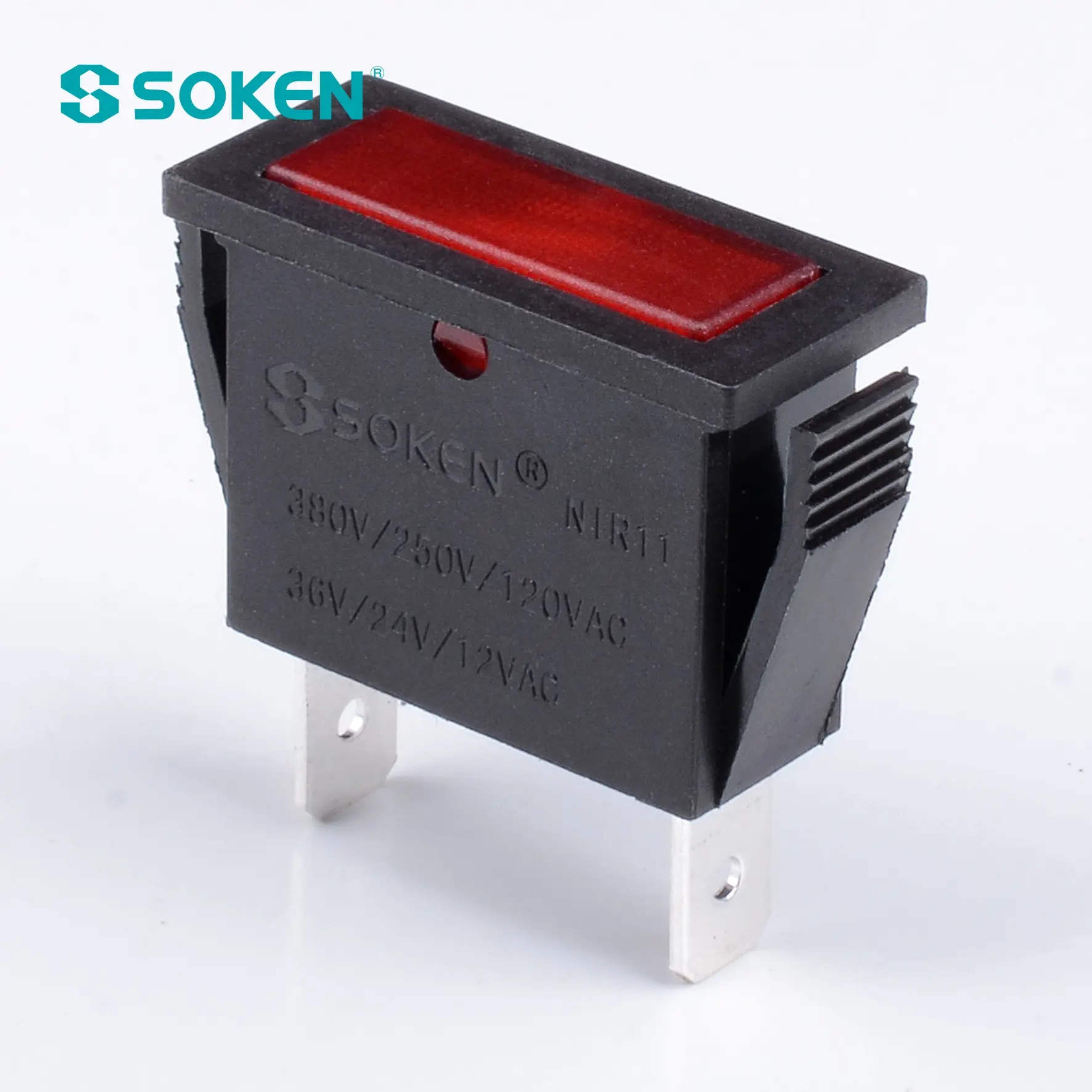
Indicator lights play a vital role in technology. You see them in devices, signaling power, status, or warnings. Early designs like the Nic10 Indicator Light with Neon Lamp paved the way for modern innovations. Today, options like the Soken LED/Neon 2 Pin Indicator Light or Neon Indicator Light with 110V, 125V, 24V offer advanced functionality.
Key Takeaways
- Indicator lights started as experiments and are now key in tech.
- In the 1960s, visible LEDs changed indicator lights, making them better.
- New designs like OLEDs and Micro-LEDs make lights greener and smarter.
Early Beginnings of the Indicator Light

Discovery of Electroluminescence
The story of the indicator light begins with the discovery of electroluminescence in 1907. British scientist H.J. Round observed this phenomenon while experimenting with silicon carbide and a crystal detector. When he applied an electric current, the material emitted a faint glow. This marked the first recorded instance of electroluminescence, where a material produces light in response to electricity. Although the discovery was groundbreaking, it remained a scientific curiosity for years. You might find it surprising that no immediate applications emerged from this finding. However, it laid the foundation for future breakthroughs in light-emitting technologies.
Oleg Losev’s First LED in 1927
In 1927, Russian scientist Oleg Losev built on Round’s work and created the first light-emitting diode (LED). He noticed that certain diodes emitted light when current passed through them. Losev documented his findings in scientific journals, describing the potential of LEDs as a new type of light source. Despite his innovative work, the world wasn’t ready to embrace LEDs. You can imagine how limited technology and materials at the time hindered their practical use. Losev’s contributions, though largely unrecognized during his lifetime, became a cornerstone for modern indicator lights.
Theoretical Foundations for Practical Use
Theoretical advancements in the mid-20th century helped transform electroluminescence into practical applications. Scientists began to understand the relationship between semiconductors and light emission. This knowledge allowed researchers to design materials that emitted brighter and more efficient light. You benefit from these developments every time you see an indicator light on your devices. These early theories paved the way for the LEDs you rely on today.
The Rise of Practical Indicator Lights
Nick Holonyak Jr. and the First Visible-Spectrum LED
In 1962, Nick Holonyak Jr., an American engineer, created the first visible-spectrum LED. This invention marked a turning point in the history of light-emitting technology. Unlike earlier LEDs that emitted infrared light, Holonyak’s LED produced red light visible to the human eye. You might find it fascinating that Holonyak believed LEDs would eventually replace incandescent bulbs. His work demonstrated how semiconductors could emit bright, efficient light, paving the way for modern indicator lights. Today, his invention is considered the foundation of the LED technology you see in everyday devices.
Early Applications in Electronics and Industry
The introduction of visible-spectrum LEDs opened doors to practical applications. You could find these early LEDs in control panels, calculators, and digital clocks. Industries quickly adopted them for their durability and low energy consumption. For example, indicator lights became essential in machinery, signaling operational status or warnings. Their reliability made them a preferred choice over traditional bulbs. These early uses showcased the potential of LEDs to revolutionize how humans interact with technology.
Overcoming Initial Limitations
Early LEDs faced challenges like limited colors and low brightness. Researchers worked tirelessly to improve the materials used in LEDs. By the 1970s, advancements allowed for brighter lights and a wider range of colors. You can thank these innovations for the vibrant indicator lights in modern electronics. Overcoming these limitations also reduced production costs, making LEDs more accessible. This progress transformed LEDs from niche components into mainstream technology.
Modern Applications and Future of Indicator Lights

Integration into Consumer Electronics and Smart Devices
You interact with indicator lights daily in your smartphones, laptops, and smart home devices. These lights provide instant feedback, such as showing when your device is charging or connected to Wi-Fi. In smart devices, they play a crucial role in enhancing user experience. For example, smart speakers use multicolored lights to indicate voice commands or system updates. Wearable technology, like fitness trackers, also relies on indicator lights to display battery levels or activity progress. These applications make your devices more intuitive and user-friendly.
Advancements in OLEDs and Micro-LEDs
OLEDs (Organic Light-Emitting Diodes) and Micro-LEDs represent the next generation of light-emitting technology. OLEDs offer brighter displays, better energy efficiency, and thinner designs. You see them in high-end TVs, smartphones, and even automotive dashboards. Micro-LEDs take this a step further by providing sharper images and longer lifespans. These advancements allow manufacturers to create more compact and efficient indicator lights. As a result, you benefit from devices that are sleeker and more durable.
Emerging Trends in Sustainable and Flexible Designs
Sustainability has become a key focus in modern technology. Manufacturers now design indicator lights using eco-friendly materials and energy-efficient processes. Flexible designs are also gaining popularity. Imagine a foldable smartphone with indicator lights embedded in its screen. These innovations not only reduce environmental impact but also open up new possibilities for creative device designs. You can expect future devices to combine functionality with sustainability.
Indicator lights have come a long way since their discovery. You can see how they evolved from simple experiments into essential tools in modern devices. Their development mirrors advancements in materials science and electronics. As OLEDs and Micro-LEDs continue to grow, indicator lights will shape industries and redefine how you interact with technology.
FAQ
What is the purpose of indicator lights in devices?
Indicator lights provide visual feedback. They show power status, connectivity, or warnings. You rely on them to understand your device’s condition without needing detailed instructions.
How do OLEDs differ from traditional LEDs?
OLEDs use organic materials to emit light. They offer brighter displays, thinner designs, and better energy efficiency. You’ll find them in high-end TVs, smartphones, and wearable devices.
Are indicator lights energy-efficient?
Yes, modern indicator lights, especially LEDs, consume minimal energy. They last longer and reduce power usage, making them an eco-friendly choice for your devices.
Post time: Feb-07-2025
